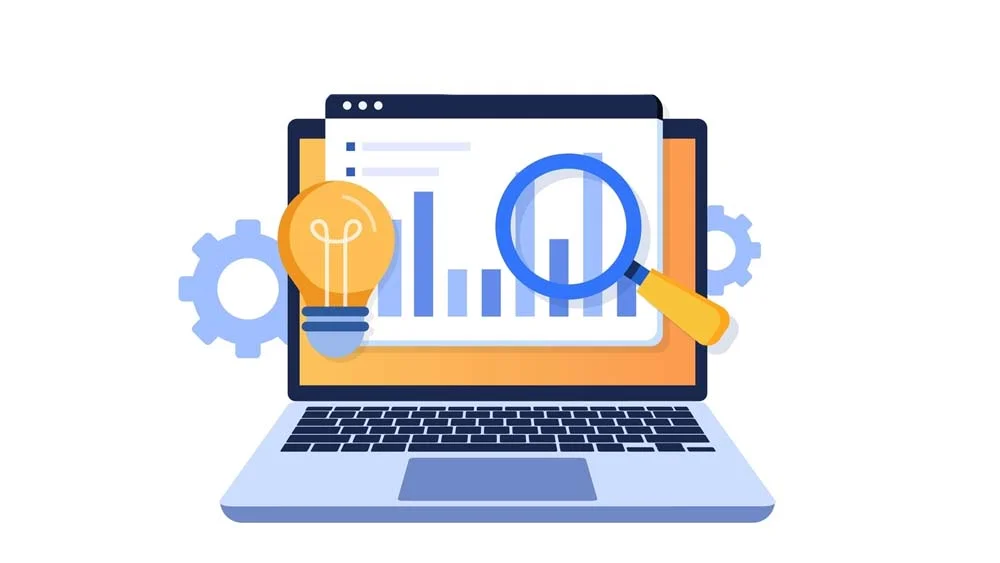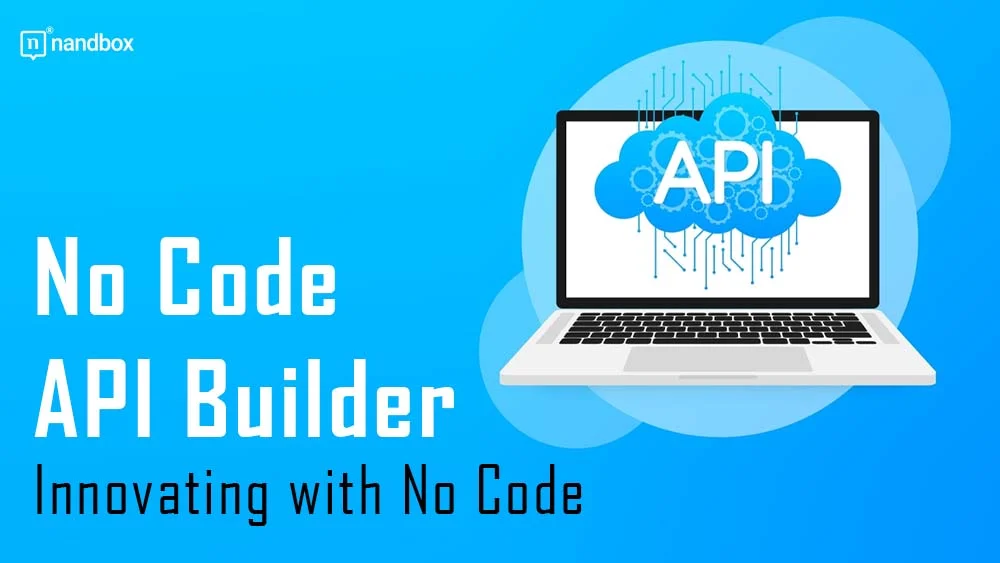How Can I Build APIs Without Writing Any Code? the Complete Guide
“Everything is connected.” This quote or fact, as I believe, can be applied to many aspects of our lives. Sometimes, these connections come naturally; we just find them there. And other times, we have to make these connections, as they are necessary to make matters better and easier. Well, this sounds so intense, but we are still talking about mobile apps. Connections between mobile apps take the second form, the one we have to make ourselves. They are also known as APIs. So, how can we establish them? This is the first and foremost purpose of a no-code API builder.
In this article, we will demonstrate everything you know about APIs and how they can connect mobile apps. In addition, we will demonstrate no code API builders and how they work.
What is API, In General?
When you think of communicating with others, what comes to mind? Usually, talks will come to mind about the topic you will discuss and the outcome. Some can think about the means of communication and how you would even begin the whole process. There is something that many might miss, which is the language of communication. When two people speak the same language, communication is easy—a breeze. However, when the language is different, it could be a tad difficult. There are many factors that could impact the process of communication between one person and another. But how does this relate to applications? Well, we are exploring APIs, which are the languages that help devices and systems communicate. The more technology advanced, the more developers were trying to find innovative ways that would simplify the transmission of data and information across two devices.
The ultimate solution turned out to be APIs. API, or application programming interface, is the common ground where two applications or software meet. You could think of the situation as a restaurant, where we would want a plate to arrive from the chef to a customer. In this case, a waiter is the way we deliver this plate. This is exactly the case with an API. The chief is an application looking for a way to transfer a plate, which is the information, to the customer, which is the other application. The waiter, or API, is the link that would help the two other parties communicate together and transmit all the data and information.
Benefits of APIs: Do They Really Improve the User Experience?
So, what could be the benefits of a part that helps applications communicate, and how does it impact an application? Well, let me tell you that the impact of an API on an application is magical. The better the communication between applications, the better the user experience and service delivery. Hmm, I guess this is not enough. How about we explore more benefits to get a glimpse of the major significance of APIs?
Seamless Integrations
APIs make it possible for various apps and services to integrate without any difficulties. Thanks to this compatibility, customers may access several features on one platform, making for a more unified experience. One example is the integration of third-party photo enhancement APIs into social networking platforms. This allows users to edit and share images seamlessly without having to navigate between different apps.
Enhanced Functionality
Developers can enhance an application’s overall performance by tapping into additional functionalities and features using APIs. Because of this, developers may take advantage of specialized services without starting from scratch, which results in better user experiences. A wider variety of features can be provided to users by simply integrating third-party services into an application; this includes payment gateways and geolocation services.
Faster Development Cycles
Using APIs, developers can speed up the development process and make it more efficient. Using established APIs allows them to speed up application development rather than creating each component from scratch. Developers can devote more time to improving the app’s user interface and overall experience, leading to a faster time-to-market and greater overall value.
Security Enhancements
Improved security measures are a result of APIs that are well-constructed and implemented. APIs allow regulated access to particular features and data, rather than exposing complete databases or internal systems. By reducing the threat possibilities, this level of control enhances security. To further guarantee that only approved users or apps have access to sensitive data, several APIs incorporate authentication and authorization strategies.
Real-time Updates
With APIs, apps can communicate with each other in real time, which means that users always get the most up-to-date information. For apps like messaging, community, or event apps, this is essential for dynamic content. Among the ways to improve the user experience, APIs and real-time updates are major ones.
Importance of APIs for Different Industries
Each industry and app category relies on applications in a different way. So, for instance, if we looked at e-commerce apps, we would find that APIs are a fundamental part. APIs provide e-commerce apps with major features and functions. As an example, incorporating a point-of-sale system is something that requires an API to connect the app to the POS to allow a customer to complete a purchase. Shipping and logistics are another part that requires APIs in e-commerce apps. API integration allows shipping and logistics service providers to work with e-commerce apps. The integration allows for rapid order fulfillment, precise shipping expense calculations, and real-time tracking of these shipments.
Another major industry that needs APIs is healthcare. With healthcare apps on the rise, there has been an urgent need for an intermediary that would allow these applications to connect with established healthcare systems to continue providing services efficiently. So, for instance, APIs allow various health record systems to connect and exchange patient data, which is a crucial component of healthcare’s seamless functionality. Since healthcare providers may obtain complete and current information, this encourages improved patient care and the quality of services provided.
What Are No-Code API Builders and How Do They Work?
Now that we have explained the major impact of APIs briefly. Yes, this is considered briefly; going into more detail about the significance would need encyclopedias. Given the many benefits that APIs provide applications and developers with, it must be easy to find specific APIs and implement them. Well, this is not exactly the case. Designing a specific industry or business-related API is a complex task since there are many aspects and approaches included in the creation process.
Many businesses spend tons of money and exert effort to create an API that could link their back-end systems to their applications. This, of course, can be a major burden on businesses. Luckily, just as no code made app development easy, it also made API creation easier. Ever heard about a no-code API builder? Guess it is time to do so.
No-code API builders are comprehensive tools that help developers prototype and design APIs from scratch based on their requirements and business needs. This development process for no-code API builders requires not even one single line of coding. And this is why many businesses prefer it, as it allows even individuals with zero coding skills to create APIs. No-code API builders cover all stages, from designing, creating, testing, and deployment.
Benefits of Using No-Code API Builders
No-code API builders have gained significant popularity in recent years, offering a variety of benefits that cater to a broad spectrum of users, from business professionals to developers. Here are several key advantages of using no-code API builders:
Accessibility for Non-Technical Users
By reducing the need for skilled developers and giving non-technical parties like project managers, business analysts, and marketers more say in the API development process, no-code API builders make development more accessible. Incorporating more people and facilitating continuous development processes is one of the keys to endless success. This accessibility promotes teamwork between technical and non-technical employees.
Cost-Effective Development
The initial investment required to use a no-code API builder is often less than that of more conventional development approaches. Organizations might save money on hiring pricey developers for regular API operations since they don’t require much coding knowledge. For organizations watching their budgets, no-code solutions are a great choice because of how easy they are to use and how quickly they can be developed.
Scalability and Performance Optimization

Even though no-code platforms hide a lot of technical details, they usually have features that help with making APIs run faster. The APIs can efficiently manage increasing demand by providing user-configurable scalability, caching, and load distribution settings. Applications with increasing or variable usage patterns would greatly benefit from these scalability features.
Top No-Code API Builders You Could Use
Well, it turns out that the idea of a no-code API builder actually exists. But are there any no-code API builders on the market that a person could actually use? Let us find out through this curated list of the best three no-code API builders.
Akana
The first no-code API builder we are going to mention is Akana. Akana is an all-inclusive tool that provides developers with everything that they need for creating an API and even more. Through Akana, a developer can edit an existing API or create one completely from scratch. Additionally, this no-code API builder also contains API analytics to help monitor and manage the performance of APIs.
Apicurio
Apicurio is another leading no-code API builder that helps developers create tailored APIs specifically for their businesses and applications. It is an open-source API builder that allows individuals to design, create, and implement APIs from scratch. Apicurio is known for having an intuitive visual interface that enhances the process of API development and makes it enjoyable and simple for developers.
Restpoint
The last no-code API builder we are going to mention is Restpoint. Although it is not as popular as the last two tools, Respoint is filled with exceptional capabilities that make API development and design as easy as pie. Restpoint is the ultimate place you would need to build enhanced APIs that would elevate your app’s functionality. In addition to building APIs, Restpoint has other capabilities, like generating API documents and integration.
Wrapping It Up
APIs are a fundamental part of all mobile apps. They are no longer something you can overlook or disregard. The more businesses and industries utilize mobile apps as one of their main tools, the more they will need a way to connect their existing systems with these apps.
The introduction and broad use of no-code API builders signifies a sea change in the app development industry. From business experts to non-technical parties, these innovative tools make it possible for everyone to contribute to API development and management without requiring them to have basic coding abilities.
The huge impact of the no-code movement from app builders to API builders encourages a new wave of unlimited means of development. So, rather than being merely a tool, a no-code API builder marks an important shift towards a more approachable and collaborative method of creating the digital future in this age of democratized technology.







